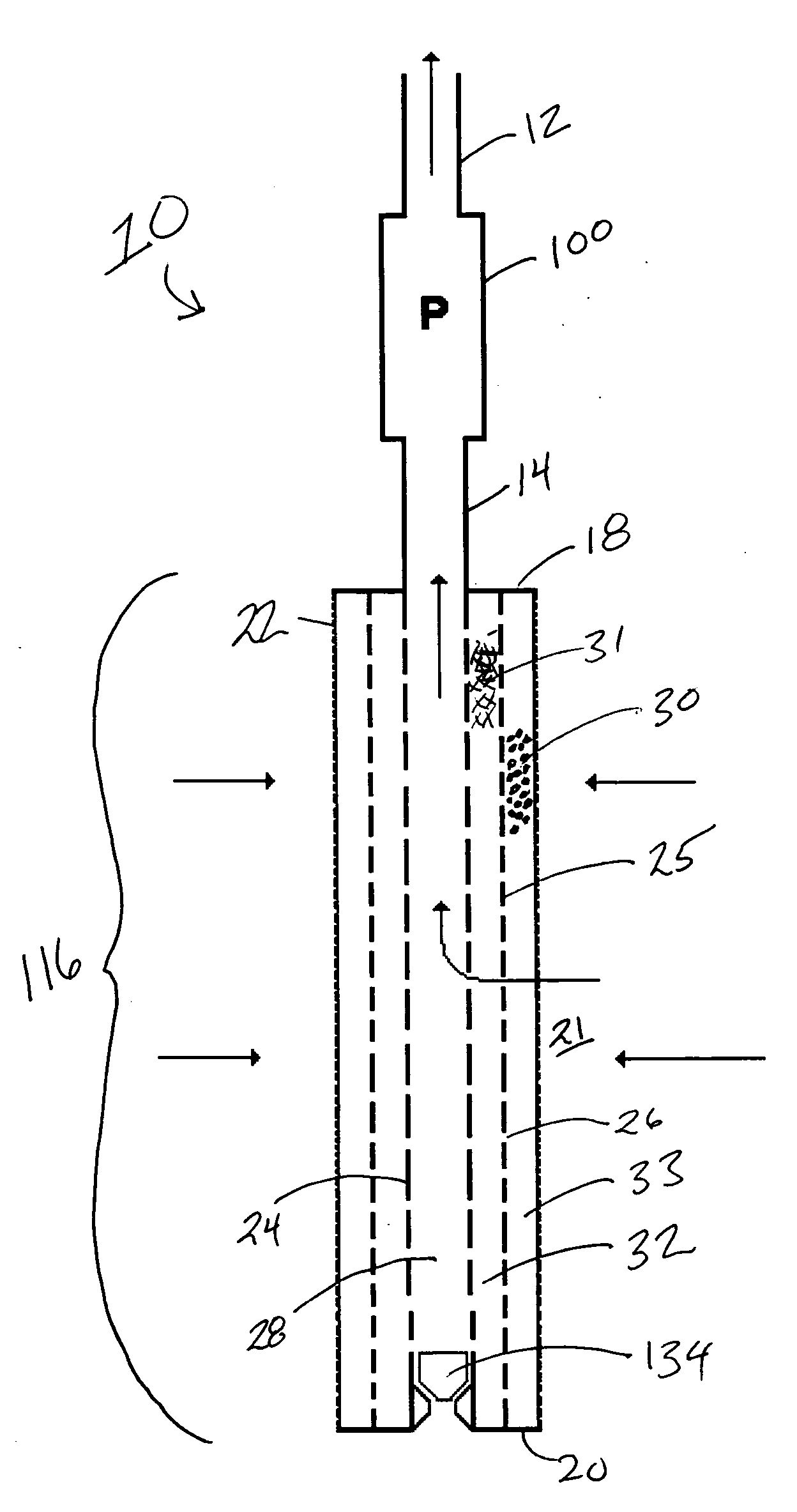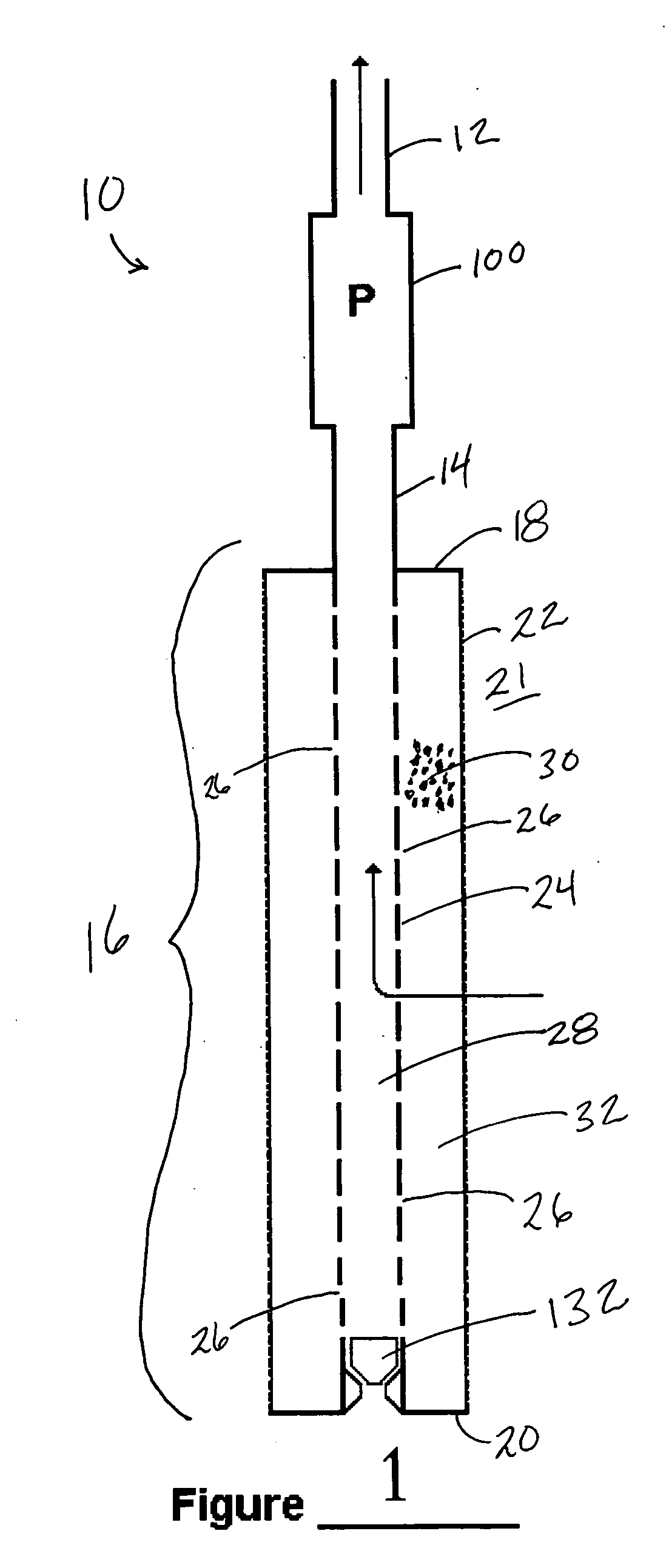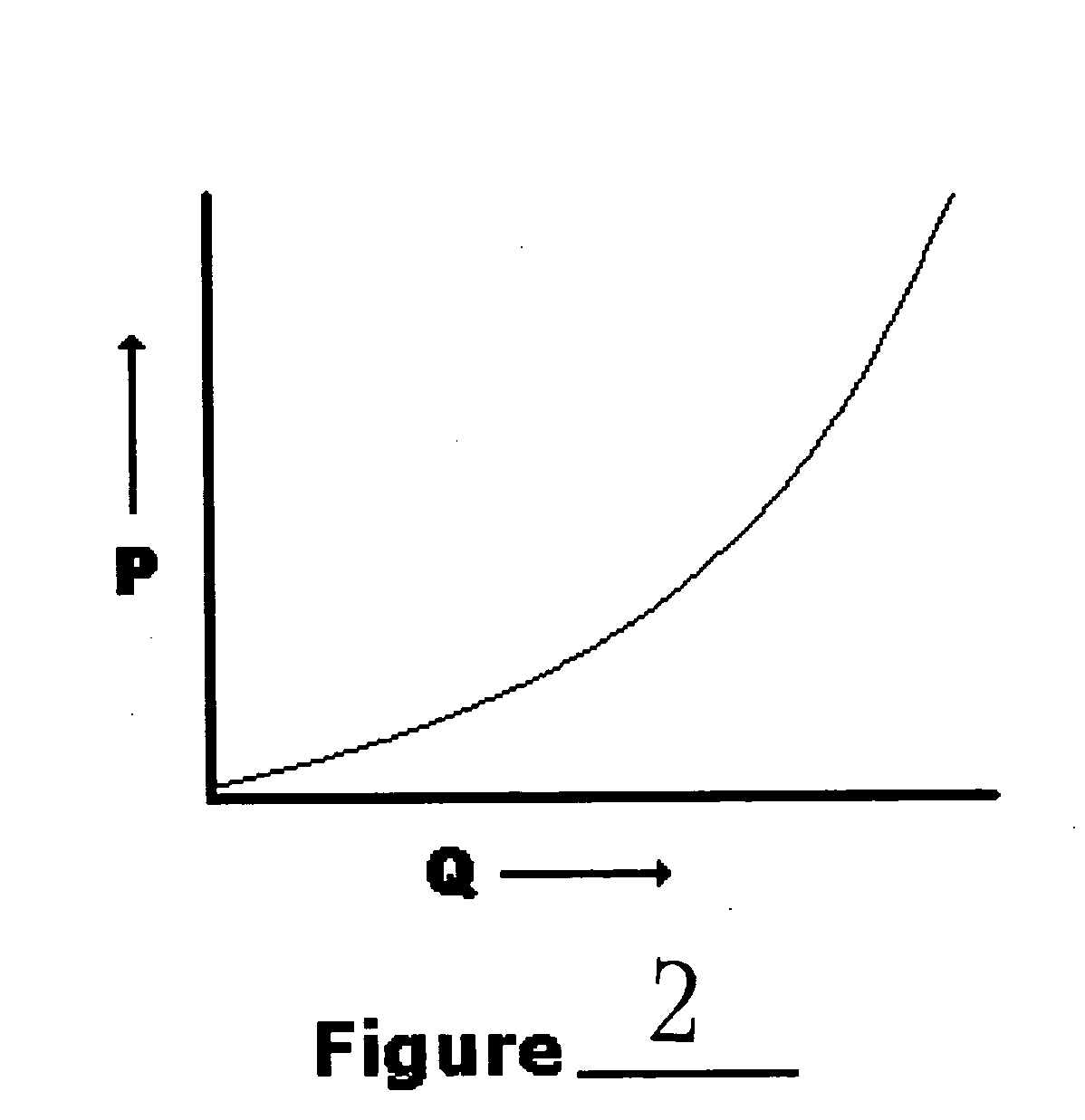Method and apparatus for downhole artificial lift system protection
a technology of artificial lift and protection device, which is applied in the direction of fluid removal, earth-moving drilling, borehole/well accessories, etc., can solve the problems of shutting down production, affecting production, and affecting production efficiency,
- Summary
- Abstract
- Description
- Claims
- Application Information
AI Technical Summary
Problems solved by technology
Method used
Image
Examples
Embodiment Construction
[0054] Advances in electric motor technology have made Electric Submersible Pumps (ESPs) an increasingly popular method of providing artificial lift for oil wells. Operating in the harsh conditions of the downhole environment, an ESP must be protected from ingesting corrosive, abrasive, or any other detrimental substance in the production fluids in order to provide a Mean Time Between Failure (MTBF) that justifies its use on an economic basis. In addition, treating the production fluids while downhole minimizes the potential hazards involved in bringing the production fluids to the surface while the production fluids may contain any detrimental substance. Moreover, scale build-up in production tubing and pump chambers must also be controlled in order to decrease the number of well interventions or workovers needed during the useful life of an oil well.
[0055] The present invention is a novel apparatus and method which combines the functions of preventing fines or sand from entering ...
PUM
 Login to View More
Login to View More Abstract
Description
Claims
Application Information
 Login to View More
Login to View More - R&D
- Intellectual Property
- Life Sciences
- Materials
- Tech Scout
- Unparalleled Data Quality
- Higher Quality Content
- 60% Fewer Hallucinations
Browse by: Latest US Patents, China's latest patents, Technical Efficacy Thesaurus, Application Domain, Technology Topic, Popular Technical Reports.
© 2025 PatSnap. All rights reserved.Legal|Privacy policy|Modern Slavery Act Transparency Statement|Sitemap|About US| Contact US: help@patsnap.com



